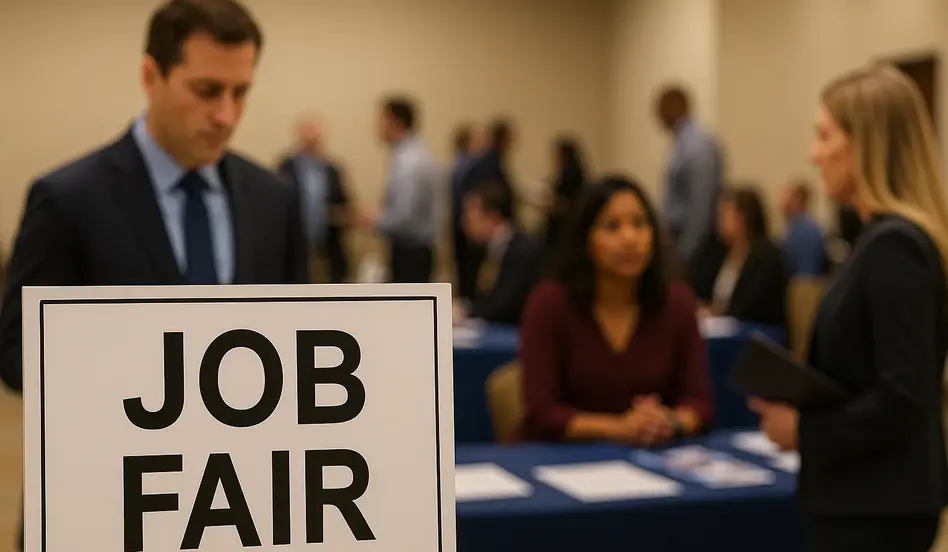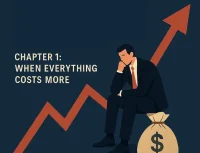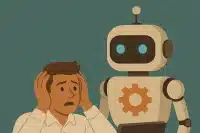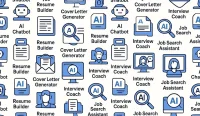The U.S. labor market has been a key driver of economic strength since the pandemic. For nearly four years, job growth has stayed above average, unemployment has remained historically low, and consumer demand has held steady. Now, however, many analysts are asking whether this momentum can continue in the face of potential
Fed Rate Cuts,
which could reshape hiring trends, wage growth, and overall business investment.
However, now we are starting to see cracks emerge. Recent reports indicate that hiring momentum is dropping sharply. Between May 2025 and July 2025, the U.S. added an average of just 35,000 jobs a month, the slowest pace since the early months of the pandemic. Investors are speculating that the Federal Reserve might cut interest rates soon to stop a slowdown from becoming a deeper contraction.
For policymakers, investors, and the average worker, the stakes are high. The question is whether the softness in hiring is a fluke—or a sign that the U.S. economy is running out of steam.
The Numbers Behind the Slowdown
- Hiring Environment: From May through July, only 35,000 jobs were added during those months, well below the 150,000-200,000 jobs required to maintain stable growth.
- Unemployment Rate: Official unemployment remains low at 4.2%; however, the underemployment rate (discouraged workers + part-time workers) is rising.
- Revisions Ahead: Economists are warning of upward revisions to prior jobs reports, thus making the current slowdown even worse.
- Industry Weakness: Hiring fatigue in manufacturing, retail, and construction despite bright spots in healthcare and green energy.
Why the Fed Is Watching Closely
The Federal Reserve’s dual mandate is to control inflation and maximize employment. For the last two years, the Fed’s focus was on controlling increased inflation, which spurred after disruptions from the pandemic and had backed up supply chain bottlenecks.
Now that inflation is easing and job creation has dropped off, Fed Chair Jerome Powell and his colleagues have a new challenge: keeping the labor market weakness from dragging the economy into recession.
What Could Trigger a Rate Cut
- Sustained Weak Hiring
If August and September reports confirm the weak trend, the Fed may have no choice but to ease. - Downward Revisions
Large revisions to past job reports could make the slowdown appear worse, forcing policymakers’ hands. - Market Expectations
Bond markets are already pricing in rate cuts, signaling that failure to act could spook investors. - Global Slowdown
Europe and China are also facing weaker growth. U.S. policymakers may preemptively cut to maintain global competitiveness.
Implications for Workers
- Wage Growth Cooling: As hiring slows, wage increases are likely to moderate further, reducing household purchasing power.
- Fewer Job Openings: Openings have already declined to 7.5 million, down from 11 million in 2022.
- Shift in Bargaining Power: Workers had leverage during the Great Resignation. That power is fading as employers gain the upper hand in a cooling market.
Employers Hold the Advantage—But You Can Still Stand Out
In a cooling job market, visibility matters more than ever. Post your job on WhatJobs and reach candidates actively looking to make their next move.
Post a Job Now →Implications for Employers
- Easier Recruitment: With fewer opportunities, employers may find it easier to attract and retain talent.
- Caution on Expansion: Many firms will delay hiring or capital investments until rate policy becomes clearer.
- AI as a Buffer: Companies may lean more heavily on automation to manage costs instead of hiring new workers.
Economic Sectors to Watch
Manufacturing
Hit hard by tariffs and slower global trade, factories are cutting back hiring.
Retail
Consumers are spending less on discretionary goods, dampening retailer hiring.
Construction & Real Estate
Higher interest rates have slowed housing demand, leading to project delays and reduced hiring.
Healthcare & Green Energy
Still expanding, thanks to demographic trends and federal incentives.
Historical Context
- 2001: Weak hiring after the dot-com crash forced the Fed into a prolonged easing cycle.
- 2008: Slowdowns in construction and finance preceded the global financial crisis.
- 2020: Pandemic job losses triggered unprecedented intervention.
The current situation is not as dire, but analysts see echoes of past downturns.
The Fed’s Dilemma
- Cut Too Soon: Risk reigniting inflation if demand rebounds too quickly.
- Cut Too Late: Risk letting weak hiring turn into mass layoffs and recession.
- Do Nothing: Markets may lose confidence, creating volatility.
This balancing act makes the next few months critical.
Expert Commentary
- Economists: “Hiring has slowed to the weakest pace since COVID. The Fed cannot ignore this.”
- Labor Advocates: “Workers are already feeling squeezed. Without proactive action, layoffs could accelerate.”
- Market Analysts: “Bond yields suggest cuts are coming. The only question is timing.”
Global Perspective
Other central banks are facing similar dilemmas:
- European Central Bank: Facing weak growth across the eurozone, may also consider cuts.
- Bank of Japan: Struggling with stagnation despite easing policies.
- Bank of England: Balancing inflation with political pressure amid job market cooling.
The Fed’s move will ripple across global markets.
What Comes Next
The next jobs report will be pivotal. If it confirms weakness, expect rate cuts by late fall. If it surprises to the upside, the Fed may hold steady.
Either way, the labor market has entered a more fragile phase. Stability can no longer be taken for granted.
FAQs
Q1: Why is the Fed considering rate cuts now?
Because job creation has slowed dramatically, suggesting the labor market may be weakening.
Q2: How weak is hiring compared to past years?
Currently at 35,000 jobs per month on average, compared to 150,000–200,000 in healthier years.
Q3: Does this mean a recession is coming?
Not necessarily, but weak hiring increases the risk if other shocks occur.
Q4: Who benefits from rate cuts?
Borrowers (businesses, homebuyers, and consumers) benefit from cheaper credit. Savers may see lower returns.
Q5: How will workers feel the impact?
Through slower wage growth, fewer openings, and potentially increased job insecurity.
Conclusion
The job market in the United States is no longer charging ahead—it is limping. For workers, this translates into fewer opportunities and less bargaining power. For the Federal Reserve, this means deciding to intervene before weakness becomes worse.
Rate cuts could provide relief, but they come with risks. The upcoming months will determine if America’s labor market is simply in a period of weakening or if it’s the beginning of a challenging trend.




